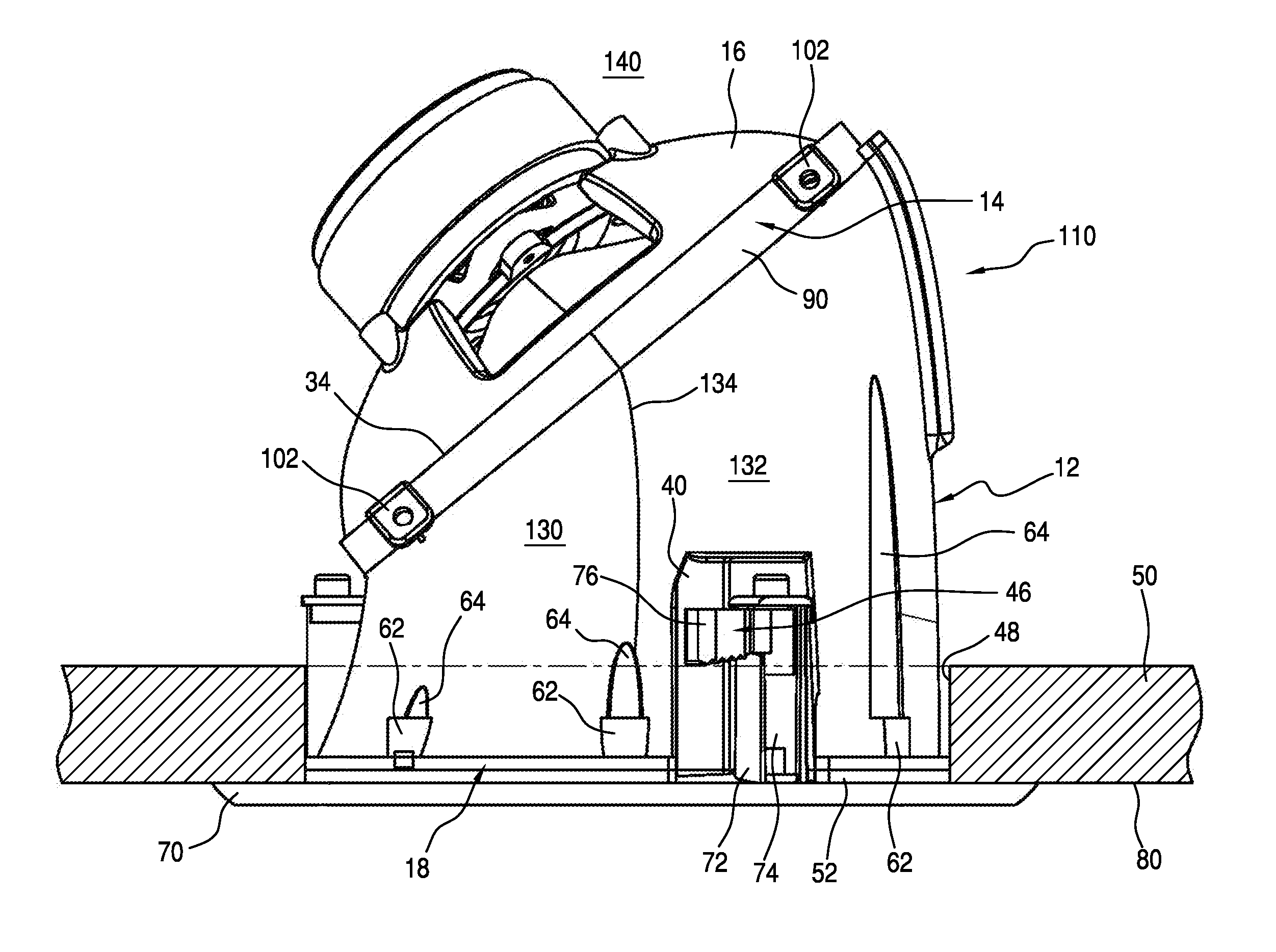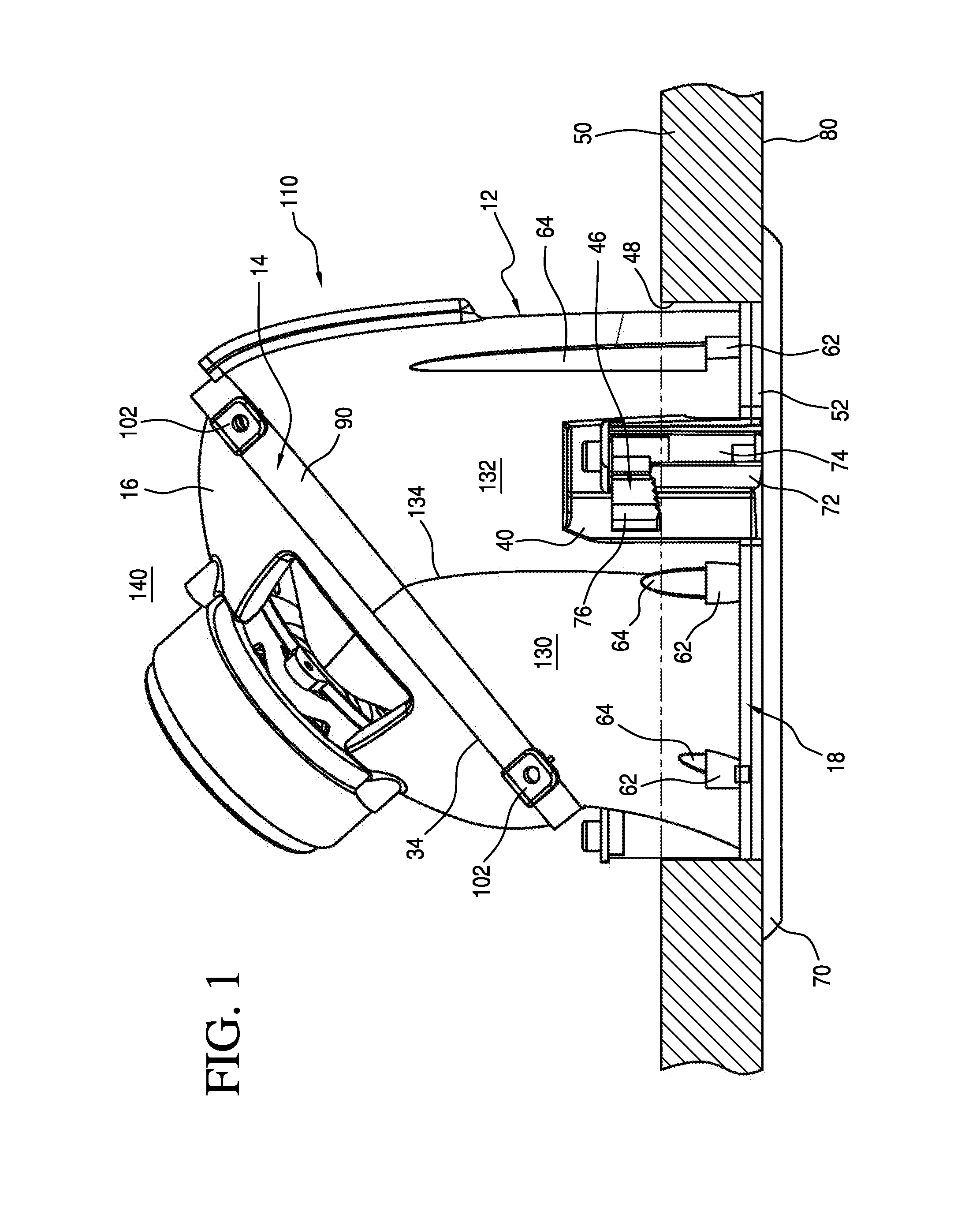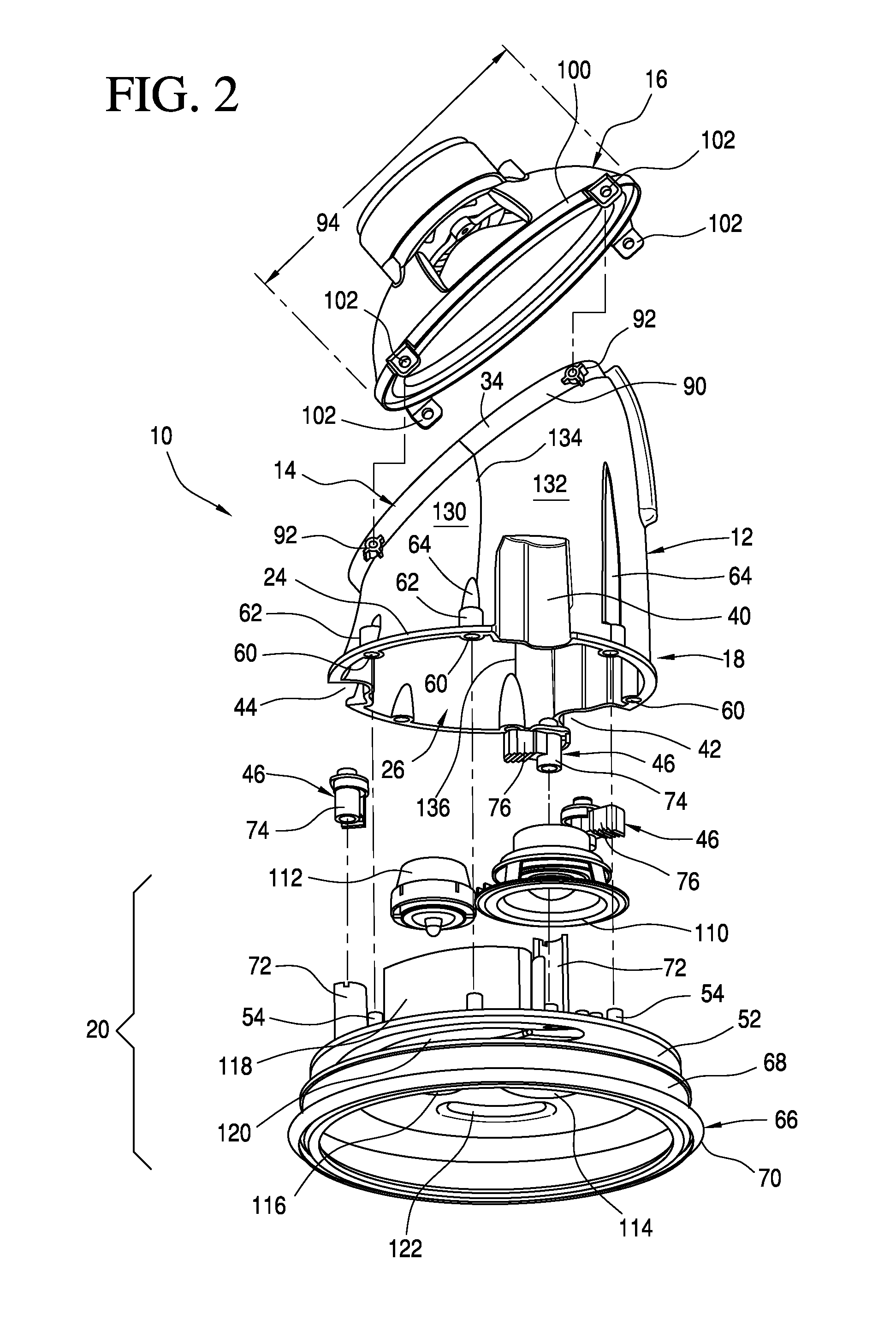Ceiling-mounted loudspeaker enclosure
a loudspeaker and enclosure technology, applied in the direction of transducer details, electrical transducers, electrical apparatus, etc., can solve the problems of coaxially mounted tweeters suffering from the lack of baffles, the level of output power has become a challenge for ceiling loudspeaker designers, and the efficiency of speakers
- Summary
- Abstract
- Description
- Claims
- Application Information
AI Technical Summary
Benefits of technology
Problems solved by technology
Method used
Image
Examples
Embodiment Construction
[0021]Referring now to the embodiment of the invention illustrated in FIGS. 1 to 4, a ceiling loudspeaker assembly generally indicated at 10 comprises a horn-shaped enclosure 12 supporting at its upper end 14 an acoustic driver 16 and at its bottom end 18 a speaker module 20. Hollow, generally tubular enclosure 12 serves as a horn-shaped acoustic waveguide for the low-range speaker or acoustic driver 16, which may be a woofer driver, for example, and may be suitably driven to generate an acoustic sound which travels through the hollow enclosure's interior lumen or waveguide and through the speaker module 20, which then facilitates sound dispersion outwardly, or when mounted in a ceiling, downwardly, as viewed in the Figures.
[0022]As illustrated, the horn enclosure 12 is generally tubular; that is, it has a substantially circular cross-section in a plane, such as the lower or proximal plane 22 defined by the circumference of the rim 24 of the bottom opening 26 (FIG. 2) at the bottom ...
PUM
 Login to View More
Login to View More Abstract
Description
Claims
Application Information
 Login to View More
Login to View More - R&D
- Intellectual Property
- Life Sciences
- Materials
- Tech Scout
- Unparalleled Data Quality
- Higher Quality Content
- 60% Fewer Hallucinations
Browse by: Latest US Patents, China's latest patents, Technical Efficacy Thesaurus, Application Domain, Technology Topic, Popular Technical Reports.
© 2025 PatSnap. All rights reserved.Legal|Privacy policy|Modern Slavery Act Transparency Statement|Sitemap|About US| Contact US: help@patsnap.com



